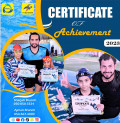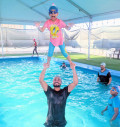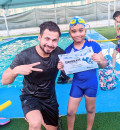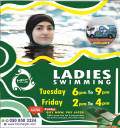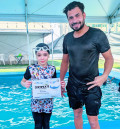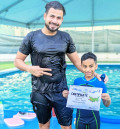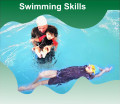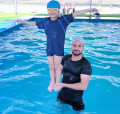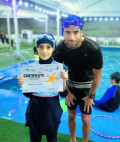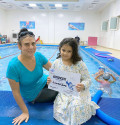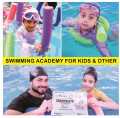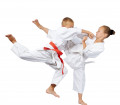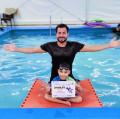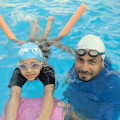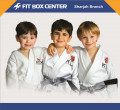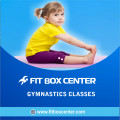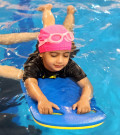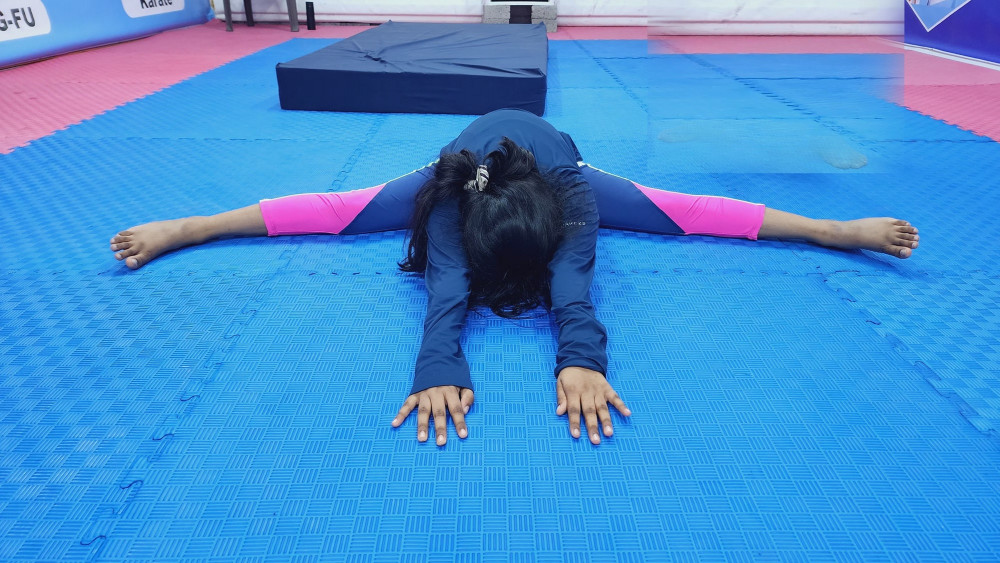
Gymnastics for Kids How to Learn Splits
2024-02-18 - swimmingGymnastics is not only a fun activity for children but also
a great way to develop strength, flexibility, and coordination. Learning
splits, a fundamental skill in gymnastics, can enhance your child's performance
and overall athleticism. In this guide, we'll explore the process of teaching
kids how to master splits effectively and safely.
Introduction to Gymnastics for Kids
Gymnastics is a dynamic sport that offers numerous physical
and mental benefits for children. From improving balance and agility to boosting
confidence and discipline, gymnastics provides a holistic approach to fitness
and skill development.
Benefits of Learning Splits in Gymnastics
Learning splits is a crucial aspect of gymnastics training
as it enhances flexibility, which is essential for performing various gymnastic
routines and maneuvers. Additionally, mastering splits can improve overall
mobility, reduce the risk of injury, and enhance performance in other physical
activities.
Preparing Your Child for Learning Splits
Before diving into split training, it's important to ensure
that your child is adequately prepared both physically and mentally. Begin each
session with a proper warm-up routine to increase blood flow to the muscles and
reduce the risk of injury.
Step-by-Step Guide to Learning Splits
Basic Stretching Routine:
Start with gentle stretches targeting the hamstrings, hip
flexors, and groin muscles. Encourage your child to hold each stretch for at
least 20-30 seconds while maintaining proper form and breathing deeply.
Split Progressions:
Begin with modified splits, where the front leg is bent and
the back leg is extended behind. Gradually encourage your child to increase the
distance between their legs until they can comfortably achieve a full split
position.
Safety Measures and Precautions
While learning splits, it's crucial to prioritize safety to
prevent injuries. Avoid overstretching by encouraging your child to listen to
their body and stop if they experience any pain or discomfort. Additionally,
always supervise your child during training sessions to ensure proper form and
technique.
Common Mistakes to Avoid
Some common mistakes when learning splits include forcing
the stretch, neglecting warm-up exercises, and failing to maintain proper
alignment. Emphasize the importance of patience and consistency to avoid these
pitfalls.
Motivational Tips for Kids
Encourage your child to stay motivated by setting achievable
goals, celebrating small victories, and providing positive reinforcement.
Remind them that progress takes time and effort, but with dedication, they can
achieve their goals.
Incorporating Splits into Gymnastics Routines
Once your child has mastered splits, integrate them into
their gymnastics routines to enhance flexibility and showcase their skills.
Practice different variations of splits to add diversity and creativity to
their performances.
Celebrating Progress and Achievements
Celebrate your child's progress and achievements throughout
their split training journey. Whether they improve their flexibility or master
a new skill, acknowledge their hard work and dedication to keep them motivated.
Encouraging Persistence and Patience
Learning splits requires patience and persistence, as
progress may not always be linear. Encourage your child to stay focused on
their goals and remind them that perseverance pays off in the long run.
Adapting Training for Different Ages
Keep in mind that children progress at different rates, so
tailor their training program to their age, abilities, and developmental stage.
Be patient and supportive as they navigate their gymnastics journey.
Importance of Rest and Recovery
Incorporate rest days into your child's training schedule to
allow their muscles to recover and prevent burnout. Encourage adequate
hydration and nutrition to support their overall health and well-being.
Building Flexibility Outside of Gymnastics
Encourage your child to engage in activities that promote
flexibility outside of gymnastics, such as yoga, dance, or martial arts.
Cross-training can enhance overall flexibility and complement their gymnastics
training.
Maintaining Consistency and Discipline
Consistency is key to mastering splits and achieving
long-term progress in gymnastics. Establish a regular training routine and
encourage your child to stay disciplined and committed to their goals.
Conclusion
Learning splits is an essential component of gymnastics
training for kids, offering numerous physical and mental benefits. By following
a structured training program, prioritizing safety, and staying motivated,
children can develop flexibility, strength, and confidence that will serve them
well both in gymnastics and in life.







.jpg)




















